Article by: Laura Gaskill
It’s easy to fall in love with beautifully styled open shelves, and to feel swayed by the convenience of keeping frequently used items sitting on the kitchen counter, bathroom sink and desk — but are these methods of storing your belongings really helpful? While there’s certainly nothing wrong with keeping things out in the open, I’ve recently been discovering that making fuller use of hidden storage makes for a cleaner, neater, more peaceful and easier-to-maintain space. Read on and see if you become convinced to give the surfaces in your home a clean sweep.
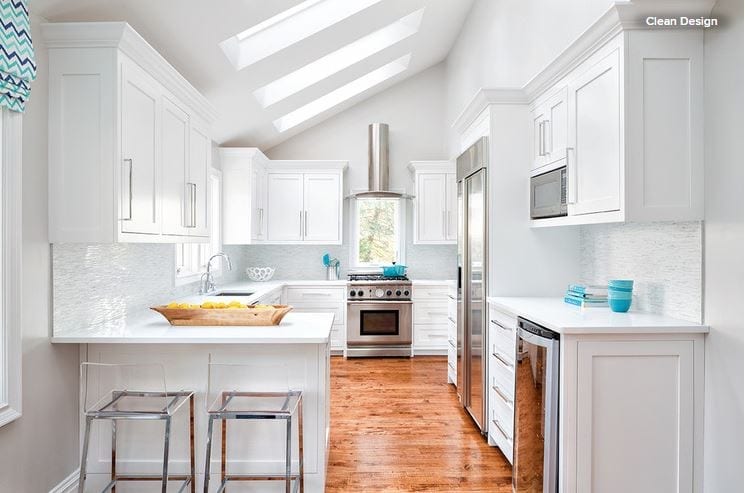
Gain more useful, usable space. It seems innocent enough at first with a simple canister of wooden spoons beside the stove, a knife rack, an attractive cutting board — after all, isn’t it nice to have things within reach? But when the coffeepot, teakettle, mixer, blender, toaster and dish drying rack are all vying for space, it can be hard to carve out enough room to prepare much more than a bowl of cereal. Imagine how luxurious it would feel to start dinner prep with the counters wide open and clear.
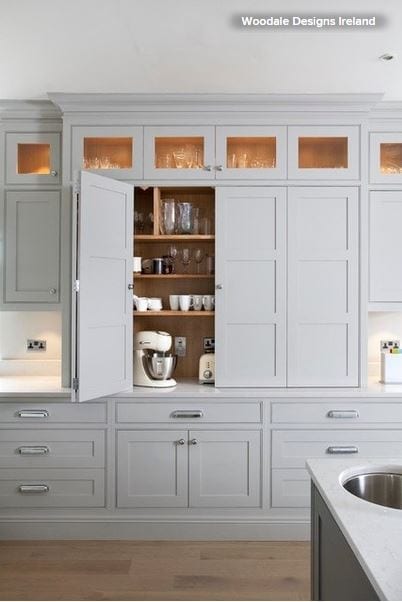
Keep items dust free. Open shelves (when carefully maintained) can be gorgeous, but they also collect dust, and in the kitchen, this is made worse by the addition of cooking oil spattering from the stovetop. If you have open shelving that you don’t plan to change, try keeping a small number of everyday dishes on the shelves, and protect the rest of your kitchen items behind closed doors.
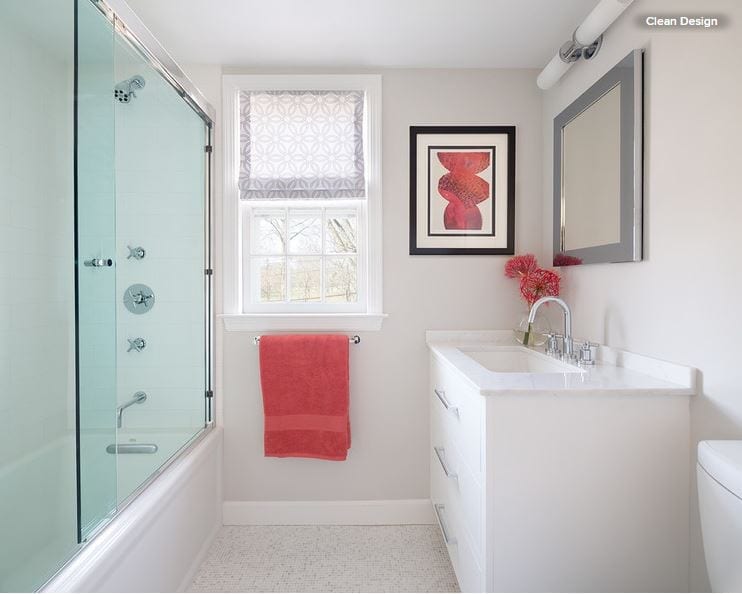
Have less to hide when company is on the way. I recently discovered that by simply cleaning out the medicine cabinet and adjusting the shelving so it could fit some taller items inside, I can easily contain all of the toiletries and toothbrushes behind closed doors instead of on the sink. With only a pretty container of soap and vase of flowers at the sink, a quick swipe with a cloth is often all that needs to be done to get the bathroom party-ready.
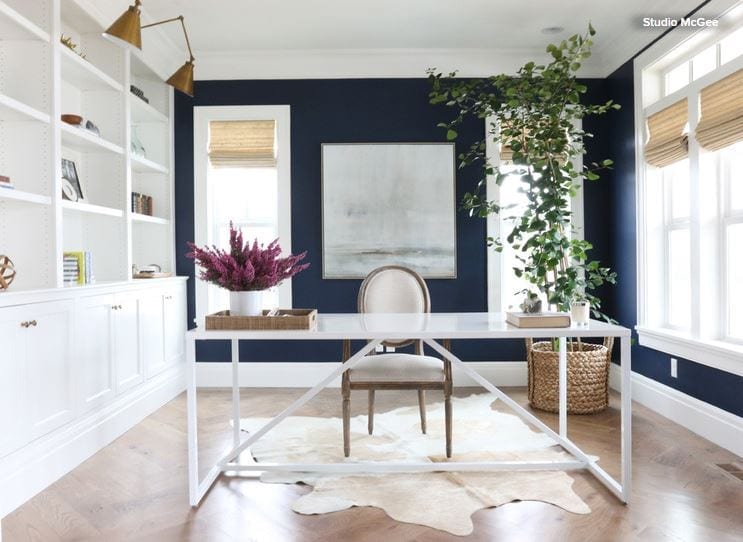
Make cleaning quicker and easier. With countertops and surfaces clear, dusting and cleaning take far less time and effort than when those same surfaces are filled with items that need to be cleared off, then returned. Floors free of clutter are ready for a quick sweep or vacuuming, and you’re more likely to get into every corner when nothing is blocking the way.
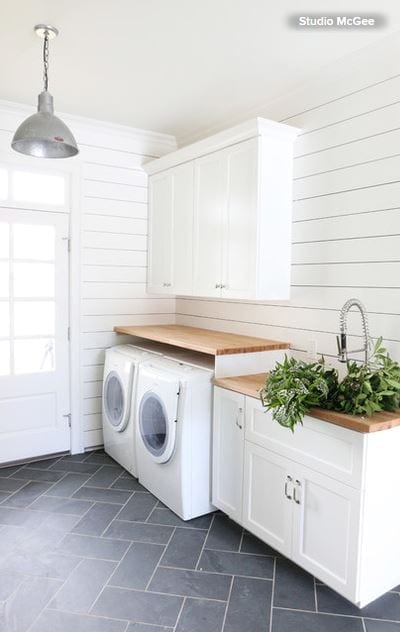
Make it simpler to avoid accumulating more clutter. When piling stuff on any available surface is the storage method, there is almost no limit to the amount of stuff you can add to the teetering towers of laundry, books and papers. But when putting away is the rule, and you’ve gotten into the habit of keeping surfaces clean and clear, it’s actually easier to maintain a clutter-free home.
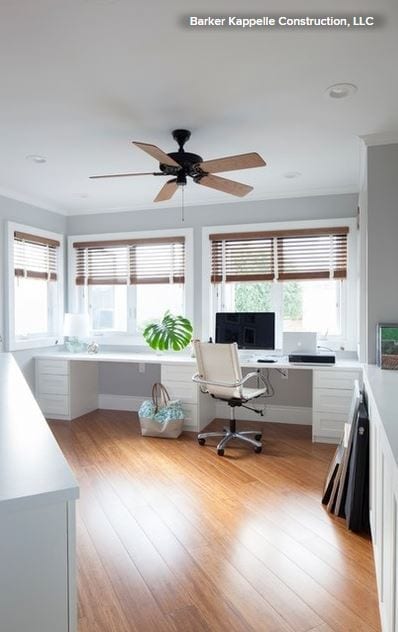
Find a place for everything and put everything in its place. If you come home and toss things onto the kitchen table or pile up to-dos on your desk, the clusters of items quickly run into one another, making it harder to find what you need when you need it. By dedicating a certain drawer (or section of a drawer) to each thing you own, you’ll know exactly where to get it and where to put it back when you’re done.
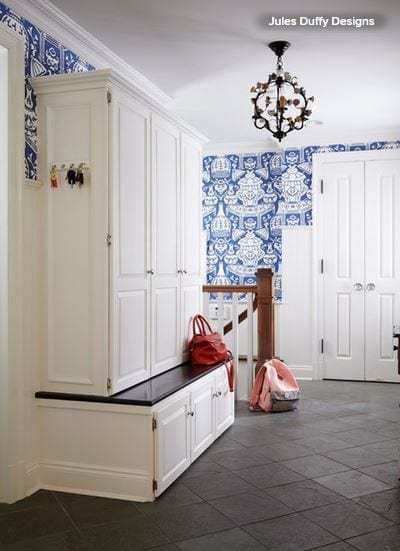
Tame the chaos. You know those perfectly styled photos of busy family mudrooms with cute little backpacks on hooks and rain boots lined up by the door? The reality is often much less attractive. Think muck-covered soccer cleats tossed unceremoniously in the middle of the hall, bags with their contents spilling out and hooks overflowing with all manner of rain gear and sweatshirts. Hide all of this behind neat closet and cupboard doors, and you can at least gain a visual rest from the mess.
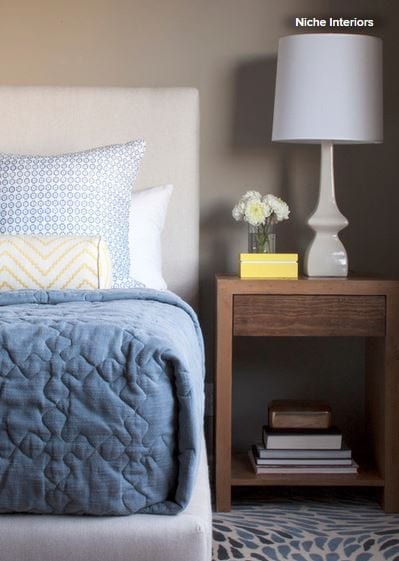
Enjoy a more peaceful feeling at home. Even if you choose to clear off only one area in your home — your bedside table, kitchen counter, desk or bathroom sink — the head-clearing, peaceful effect might surprise you. Waking up and coming home each day to a perfectly cleared area is calming and pleasant, and makes everyday tasks and routines easier to handle.